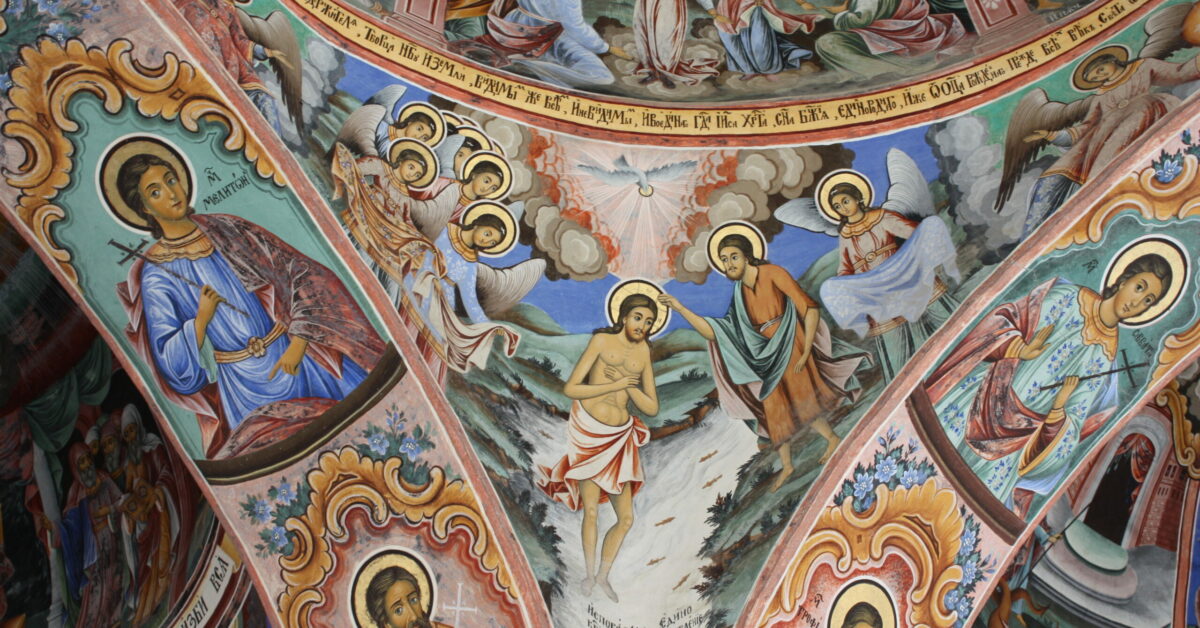Awe-Inspiring: Pre-Baptismal Anointing in Eastern Rites of the Early Church
Last week Kent wrote about the post-baptismal anointing in the West (with Ambrose as our source) and its ritual connection with the coming of the Holy Spirit. This week we’ll look at an earlier stratum of baptismal anointing from East Syrian and Armenian sources. In the 1970s liturgical scholar Gabriele Winkler broke new ground in her dissertation work, noting that these earliest sources in Syriac and Armenian have only a pre-baptismal anointing and that this anointing is linked ritually to Jesus’ baptism. She writes:
… in the oldest Syriac documents, Christian baptism is shaped after Christ’s baptism in the Jordan. As Jesus had received the anointing through the divine presence in the appearance of a dove, and was invested as the Messiah, so in Christian baptism every candidate is anointed and, in connection with this anointing, the gift of Spirit is conferred. Therefore the main theme of this prebaptismal anointing is the entry into the eschatological kingship of the Messiah, being in the true sense of the word assimilated in the Messiah-King through this anointing.
Winkler, “The Original Meaning of the Prebaptismal Anointing and its Implications,” Worship 52 (1978): 36.
She points out the many images in these East Syrian and Armenian texts that draw on the Old Testament narratives of the anointing of kings, associated with the coming of the Spirit. She quotes from the Disascalia, “… the Lord in baptism, by the imposition of the hand of bishop, bore witness to each one of you, and uttered His holy voice, saying, ‘Thou art my Son. I this day have begotten you’” (Ps. 2:7). She asserts that this and other references in these East Syrian texts point to “the deeper meaning of this Old Testament imagery: The anointing of the priest-king of the old covenant prefigured the anointing of the Messiah. Jesus is revealed as the Messiah-King at the Jordan through the descent of the Spirit in the appearance of a dove.” Thus, she continues, “It is also no longer puzzling why the anointing, and not the immersion in the water, forms the central part of baptism in the Syriac sources” (Winkler, 36-37).
In support of Winkler’s hypothesis that in the earliest baptismal rituals “Christian baptism is shaped after Christ’s baptism in the Jordan” and the giving of the Holy Spirit was a central meaning of the rite is the word “Christian.” Luke records that “it was in Antioch that the disciples were first called ‘Christian’” (Acts 11:26). The Greek word “Christos,” translation of the Hebrew word Messiah, means “anointed one.” As a Lutheran steeped in the dominant baptismal motive of Scripture and the Western Church (Romans 6, joined with Christ his death and resurrection), studying with Dr. Winkler 30 years ago opened me to the multivalent gifts of baptism: the forgiveness of sins, the giving of the Holy Spirit, and being chosen by God, begotten as God’s child in this sacrament.
+++++++++++++++++++++++++++++++++++++++
Image: Baptism of Jesus in the Jordan; Fresco in the Rila Monastery, Rilakloster, Kloster Rila, Рилски манастир, Bulgaria 2009
Creative Commons Attribution-Share Alike 3.0 Unported license.
https://commons.wikimedia.org/wiki/File:Rilakloster_Wandgem%C3%A4lde_a_20090407_014.JPG
